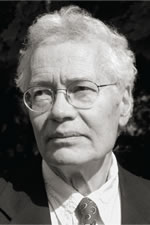
The BioCycle response to John Tierny’s “Recycling Is Garbage” (NYT, 6/30/1996) and “The Reign Of Recycling” (NYT, 10/4/2015) — recycled from BioCycle, July 1996. See “Deja Vu Yet Again” on page 6.
BioCycle October 2015
Jerome Goldstein
In August 1896, a young man named Adolph Ochs moved from Chattanooga to New York to take over a failing newspaper called The New York Times. Ochs promised his backers he would create a “high standard daily journal, a model for fairness, cleanliness, independence and enterprise.” Ochs coined the slogan, “All the news that’s fit to print,” stressing news and fit to distinguish the paper from its sensationalist rivals. On June 30, 1996 — when celebrations were just beginning to commemorate the paper’s 100th anniversary under that motto — recyclers and composters concluded that the slogan should be shifted to something like: “All the garbage that fits in print.”
On that Sunday, the editors of The New York Times Magazine ran a cover story headlined “Recycling Is Garbage,” which went on for many pages trying to document its statement that “Recycling squanders money and good will — and doesn’t do much for the environment, either.” The script was better suited to a Comedy Club than the Times’ Magazine pages as the one-liners lampooned elementary schoolchildren and their science programs on waste composition. Next was ridicule of landfill diversion programs: “There’s no shortage of landfill space. Mandatory recycling programs … offer mainly short-term benefits to a few groups — politicians, public relations consultants, environmental organizations, waste handling corporations.”
After accusing journalists of creating the garbage crisis, kicking away such silliness as recycling goals and finite natural resources, the writer — an employee of the Times Magazine staff — at last gets to the rousing finale — his discovery of a landfill 300 miles away in Virginia which accepts 4,000 tons of trash a day, much of it from the New York area. “1 got lost on the way to the landfill and drove around the perimeter of the woody property without realizing there was garbage hidden back there …. Now, thanks to its new landfill, the county has lower taxes, better paid teachers and splendid schools.” Bring down the curtain on recycling, and bring on the applause.
It’s a bit hard to understand why a newspaper so rich in tradition and so influential in shaping public dialogue decided to run a diatribe on a key approach to waste management when its home metropolis has announced the closure of Fresh Kills Landfill by December 31, 2001. A task force must come up with new solutions for the city’s daily output of 13,000 tons of residential garbage. As reported in this issue [July 1996] of BioCycle, cities like Tucson and states like Iowa are aggressively investing in ways to reduce collection costs for recyclables and compostables while taking steps to achieve 50 percent diversion. There are tens of thousands of dedicated persons doing their best to improve the economics of recycling and composting by building participation rates and generating marketable products. The job is not made easier by some glib journalist who has trouble even finding a landfill, nor the foggiest idea of what should go into one.
Ironically, in a June 20th, 1996 editorial, the Times called on the NYC mayor to make recycling a priority in solving disposal problems, after he cut the city’s recycling budget by $29.8 million. “Once the Mayor begins examining the cost of exporting garbage, recycling will start looking like a better and better investment,” pointed out the editorial writers. “The city should be increasing its collection of paper products right now, expanding education and enforcement, and making a more serious commitment to composting organic garbage like leaves and food.” Unfortunately in terms of getting a message out to the public, the magazine cover story in a Sunday paper is read by a few million more people than the inside editorial page of a daily edition.
Congratulations, Mr. Ochs — it was a great hundred years. How about starting the second hundred over again?
— Jerome Goldstein, July 1996










